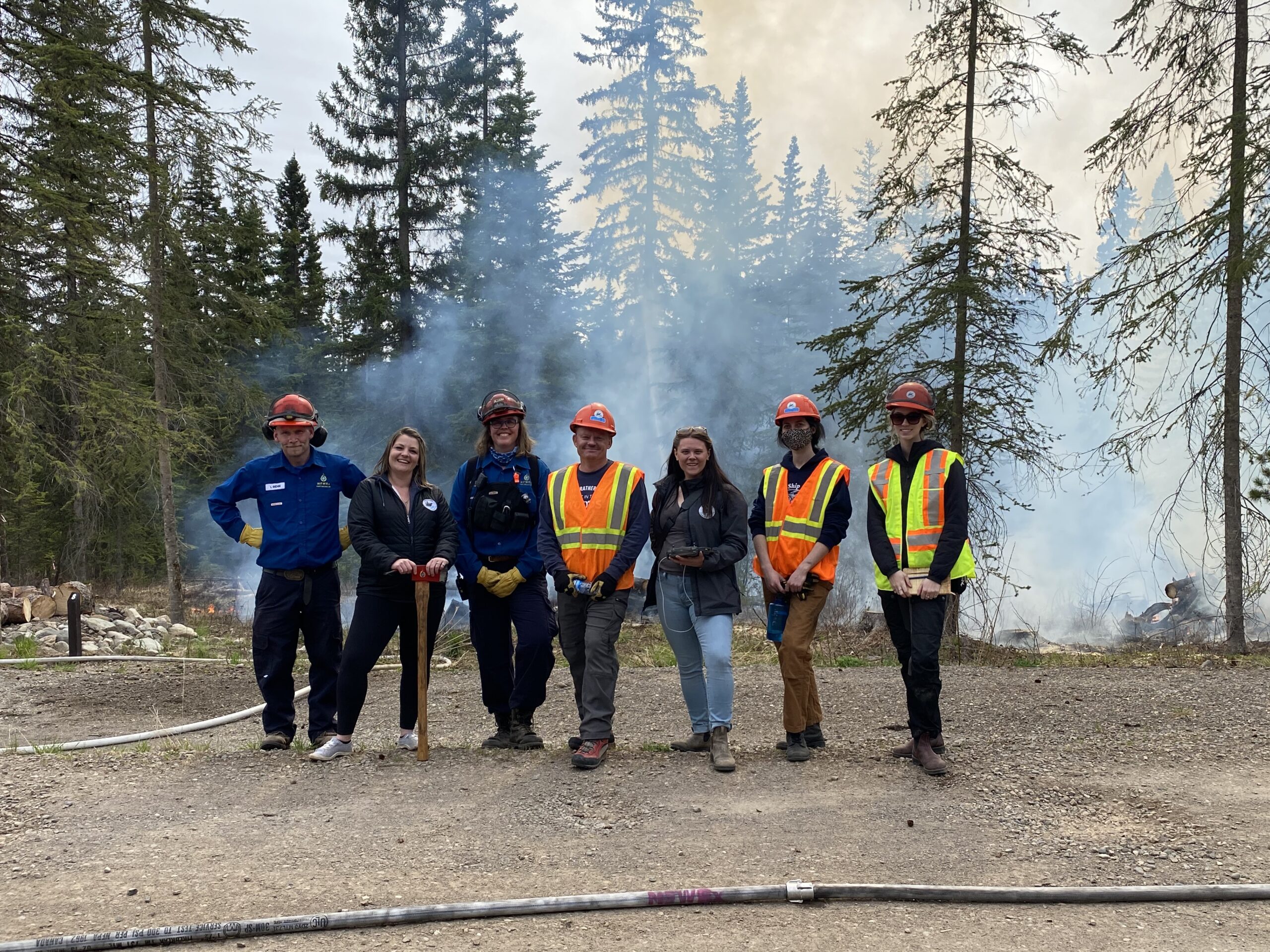Burns Lake Community Forest (BLCF) is located in the northern interior of BC, Canada. Running since 1989, Burns Lake is the oldest community forest in BC. Their harvesting, silviculture and forest management activities provide benefits for the Village of Burns Lake, First Nations partners, and for all residents of the Lakes Timber Supply Area in a sustainable manner. Like so many communities in 2022 and 2023, they were affected by serious wildfires, which resulted in loss of forest habitat, evacuations and financial loss.

Sonja Leverkus and Frank Varga
For this article, we sat down to speak with Frank Varga, General Manager at BLCF and Dr. Sonja E.R. Leverkus, Founder of Shifting Mosaics Consulting, to find out what Burns Lake learned from past fires and what their fire mitigation plan looks like for 2024.
Q: What are the particular challenges relating to fire mitigation that are facing Burns Lake this year?
There is an intricate balance between climate change, natural disturbance and forest ecosystems in Canada; forest fuels impact the fire environment alongside weather and climate change. In the case of Burns Lake, the factors of high drought and challenging fuels, due to the Mountain Pine Beetle infestation, combine to contribute to a cycle for fires to return to our landscape.
Q: How do you manage fire mitigation for BLCF?
You have to start with an action plan. Based on extensive work by B.A. Blackwell and Associates, we developed a prescribed fire program. BLCF used its landscape fire management plan to select priority locations for prescribed fire. We wrote a series of Rx fire burn plans, spent time doing public engagement through many sessions in person, on social media and in the newspaper, including a collaborative information bulletin with the BC Wildfire Service (BCWS), who also provided the gear and resources to support the successful implementation.

Q: How do you track and evaluate your fire mitigation activities to measure success?
We focus on three key factors to evaluate our success:
- We complete pre and post fuel hazard assessments in the areas of treatment.
- We track our progress and treatment areas in Phoenix Connect, our forestry management software. For each project, it allows us to track our costs, plan budgets and set up reporting, which is especially important if the funds are secured from multiple government programs.
- Using our data set, we support research projects that examine the efficacy of fire mitigation treatments, so we are aware of best practices. One such project looks at the impact of fuel reduction treatments and offers recommendations – you can read it here.

Q: What is the most important lesson you learned from the 2023 fires?
Burn more area! The only area between some of the fires of 2023 west of Burns Lake that burned was the BLCF prescribed fire unit. A challenge is waiting for the right indices and then having a lack of water while the landscape is receptive to fire. Conducting prescribed fire in this highly flammable landscape requires attention to detail, collaboration, and professional application and diligence with fire.
###

 Heidi Walsh, RPF
Heidi Walsh, RPF
Phone: 250-591-4433
Toll-Free: 1-877-377-9786
info@drsystemsinc.com
Phoenix Connect provides forestry operations management software, services and support. Learn more about DRS Phoenix Connect here.
